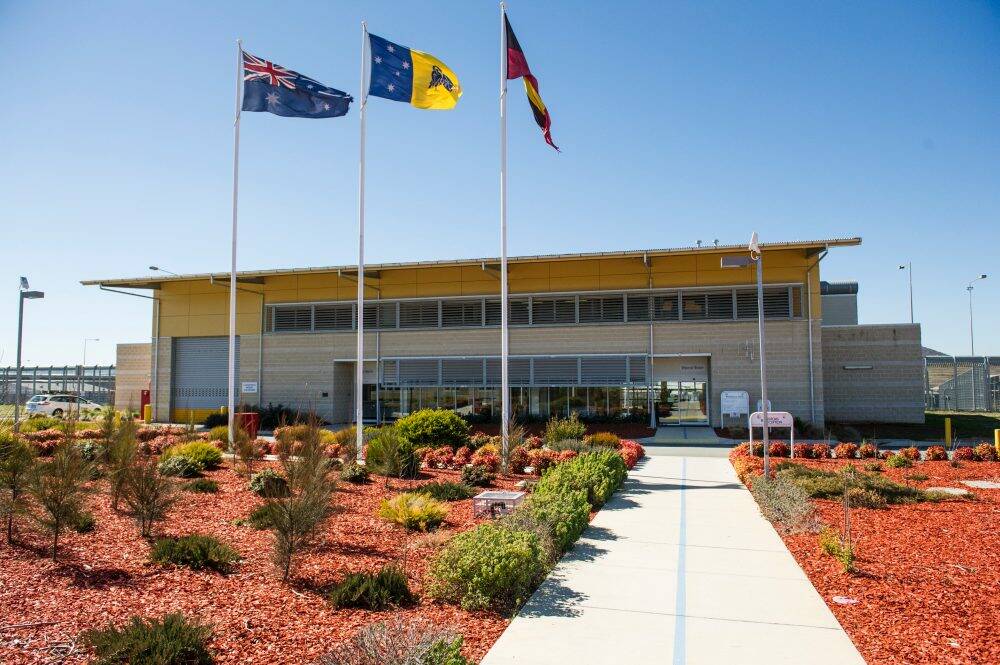In late April when ACT Corrections Minister Shane Rattenbury announced the $54 million upgrade to the Alexander Maconochie Centre, I happened to be in Tasmania and therefore missed the public reaction to the news. I also missed the private discussions that I would have had with friends and associates about the project's merits.
Subscribe now for unlimited access.
or signup to continue reading
Government announcements of expenditure for schools, roads or health services are almost always applauded, but spending money on prisons usually attracts a variety of opinions. This certainly seems to have been the case with the AMC upgrade. In many similar situations it has been suggested the money would be better spent on crime prevention, early intervention with children who misbehave, providing more support and amenities for people living in locations that produce higher than average numbers of offenders, and improving drug and alcohol treatment programs and the like.

All these ideas may have some merit but they do not answer the pressing question of what must be done to cope with the increasing numbers of prisoners being held in overcrowded jails.
In my view, it is essential for governments to bite the bullet and provide adequate prison accommodation, as the consequences of not doing so can be serious indeed. If, for example, a community is unable to provide custodial facilities that are secure (escape proof) and safe (for both prisoners and staff) for its most serious offenders, public confidence in the whole criminal justice system will be undermined. In such a situation, vigilante groups can be expected, self-defence and private justice will become the norm, and public demands for the return of capital punishment will become more strident. (If anyone thinks this is an extreme prediction, just imagine what would happen if a convicted murderer, sentenced to life, was able to escape from a maximum-security prison.)

On the other hand, when adequate, safe and secure prison space is available, sensible things can be done to change the attitudes and future behaviour of many offenders - even it is not possible to turn every single offender into a law-abiding citizen.
The AMC upgrade will provide two new cell blocks, which will bring the total number of beds in the institution to 480 with a surge capacity of 512. This should be sufficient for many years.
I hope the extra space will make it possible for the ACT to conform to the requirements of the United Nations Standard Minimum Rules for the Treatment of Offenders, particularly with regard to prohibition of having two prisoners in one cell (unless great care is taken to ensure the prisoners involved are compatible) and the need to hold those on remand separately from sentenced prisoners. Both of these requirements seem to have been largely ignored in the AMC.
Even more important, I hope it will be possible in the future for appropriate space and staffing to be made available for a wide range of therapeutic programs to be offered - in such areas as anger management, cognitive skills, intensive drug treatment and sex offender treatment. Considerable research overseas (regrettably, not in Australia) has shown these programs can significantly reduce recidivism (from about 19 to 20 per cent to 11 or 12 per cent) if they are delivered by well-trained and experienced professional staff. These encouraging results should not be interpreted to suggest that uniformed staff have no role in the treatment of offenders.
I know it is common for academics to be somewhat churlish or belittling of the competence and skill of uniformed prison officers, or corrections officers as they are now described, but I do not share that view. In my view it is the uniformed staff who hold the key to managing effective and productive prisons. They are the only staff members who are on duty for every hour of every day, and they are the ones who are best placed to make practical assessments of the behaviour of the people under their supervision.
Professional staff (psychologists, health workers, education officers, trade instructors and social workers) as indicated above also play an important part, but they are only on duty for about 25 per cent of the time and they are often confined to highly specialised areas of work and therefore may not always fully understand the complex and volatile nature of the numerous relationships that are formed in any closed community. In a well-managed correctional facility, a high degree of mutual respect can be nurtured between the two groups of staff.
Recent research from England's Cambridge University has shown the social climate of particular prisons or sections of prisons can be linked to the level of subsequent recidivism of prisoners. A positive social climate encouraging co-operation and the treatment of prisoners with respect has also been shown to lead to the successful maintenance of security and control of serious offenders with a minimal use of force or coercion. And the point must be made that the type of social climate that prevails is largely dependent on the attitudes and behaviour of the uniformed staff.
Even though the upgrade of the AMC has my full support, there are a number of other developments that are needed. I am not yet convinced, for example, that we have solved the problem of having far too many unsentenced suspected offenders in custody (but that is a matter for the courts and the Attorney-General, not the Minister for Corrections), and I am not yet convinced that appropriate work and vocational training opportunities are provided at the AMC.
On the other hand, we can take pride in the fact that we still have the lowest imprisonment rate in Australia and we have many more of our offenders in community corrections than we have in custody.
David Biles is a semi-retired criminologist who lives in Canberra.

